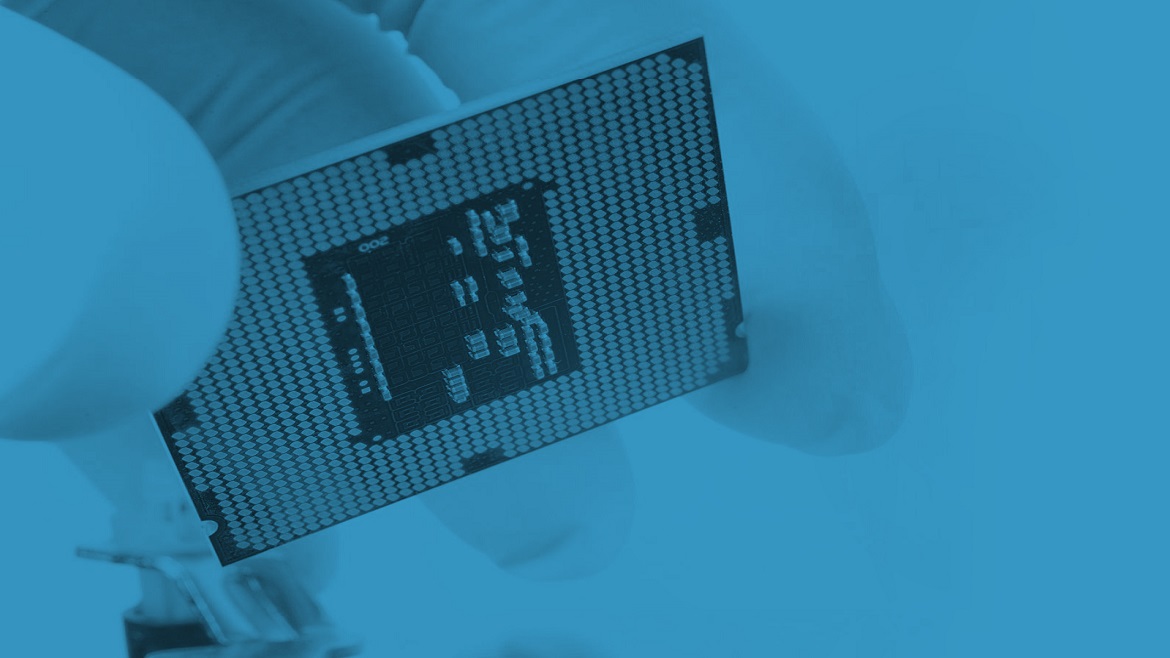This business – the semiconductor foundry – kept a low profile and was seen as a second-rate enterprise compared to the powerhouses of Intel, IBM and other semiconductor technology leaders. That scenario has been flipped on its head now, and the business of chip-making is making headlines again.
The semiconductor foundry business as we know it was created in the 1980s by Taiwan Semiconductor Manufacturing Company (TSMC), and it has pulled off the trick of becoming the dominant player in a field that it invented. TSMC has a 60% market share and an 11% compound annual growth rate (CAGR) since 2000. Its newest competitors include the only other companies that can still afford leading-edge factories that turn raw silicon into today’s advanced chip – Intel and Samsung. Intel has had the leading technology for many years, which it aims to leverage by processing other companies’ chips while it reorients its own products away from the fading PC business toward the mobile space. Samsung, in its effort to lead in as many technology businesses as possible, also offers its wafer fab horsepower to other chip companies.
Established technology leaders aren’t the only companies attracted by the growth rate in the semiconductor foundry business. Competitors in China are stepping up, with US$5bn in revenue projected for 2013. The leading Chinese foundry SMIC generated US$1bn in revenue in the first half of 2013 alone, while earning a record profit. China’s foundries will do US$1.5bn worth of business with North America in 2013 – a growth of 50% in two years – suggesting that the security concerns regarding a Chinese supply base aren’t so scary. With the Chinese government’s latest five-year plan providing tax incentives for semiconductor companies founded since 2011, we should see many start-ups emerging and further shaking things up. Collaboration between China and Taiwan will also provide some cross-pollination to spur innovation. TSMC’s facilities in China make it the fifth largest integrated circuit maker there, while leading Chinese design firms are having advanced technology products manufactured by TSMC in Taiwan. The Taiwan Strait doesn’t look so broad in the semiconductor industry.
A big concern with any technology business in China is the thorny issue of intellectual property rights. But telecom tech giant Huawei has spoken out publicly about the need for IP protection and the Chinese foundry XMC recently licensed chip technology from Spansion, a US firm, indicating that at least some Chinese companies see the benefits of playing ball on the IP front to foster their international business.
Apple steered it foundry business from Samsung to TSMC partly because of ongoing IP battles, but now there are signs of that business heading back to Samsung. That’s not totally clear, though, because in parallel with that announcement, there were also reports of Apple talking to Global Foundries about producing its chips at their foundry in the US. Along with the benefits of playing foundries against each other, there is certainly a PR benefit of US-based manufacturing. Apple was also reported to be interested in buying its own silicon wafer fab capability from Taiwan-based foundry UMC. That would be one thing to do when you have US$40bn in cash. Apple might even pursue all of these avenues to keep its options open, but wherever it decides to manufacture its chips, the decision will send ripples through the global semiconductor supply chain.
Although Taiwan continues to dominate semiconductor manufacturing, firms in China, Korea and the US are jumping into the foundry business and Apple is keeping all of them on their toes by keeping its options open. Much more change is still to come.
The views and opinions expressed in this article are those of the authors and do not necessarily reflect the views of The Economist Intelligence Unit Limited (EIU) or any other member of The Economist Group. The Economist Group (including the EIU) cannot accept any responsibility or liability for reliance by any person on this article or any of the information, opinions or conclusions set out in the article.




